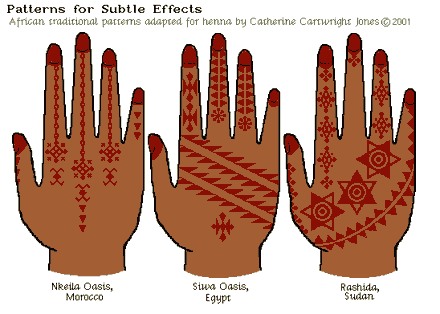|
Since the henna creates a translucent stain over the underlying skin tone, try to create harmony and contrast by choice of henna source, recipe, duration of application, and aftercare. If the henna stain matches the skin, it will be nearly invisible. To compensate for henna similar in color to the skin tone, use bold patterns where a heavy, saturating, application of henna is appropriate. To create more opaque dark browns and near blacks, add an essential oil to the paste that has a high level of terpineol, or similar monoterpines. Tea Tree essential oil is at least 35% terpinene-4-ol, as well as high levels of cineol. Cajeput essential oil has high levels of cineol, terpineol, eugenol, and nerolidol. The addition of terpineol by itself darkens henna stain. The essential oils, possibly because the synergistic effect of several monoterpines, seem to darken the henna more than refined terpineol by itself. |



